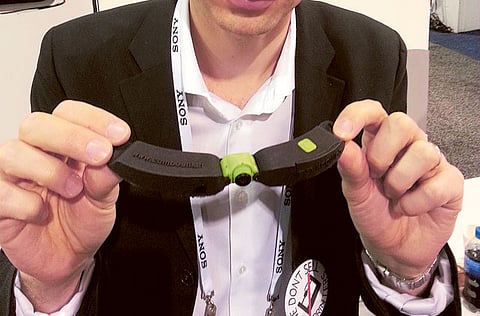Printing technology enters new era with a third dimension
Demand for 3D printers exceeds supply

Las Vegas: Five years ago, most people thought the ability to “print” a three-dimensional object was the stuff of science fiction.
That wasn’t true even then, but over the past couple of years there has been a growing recognition that, first, such technology does exist, and second, that it was quickly moving into the commercial space.
Exactly where the tipping point was between novelty and viability isn’t clear, but this year for the first time at the consumer electronics show, International CES, in Las Vegas, 3D printer makers and service providers are coming into their own. This isn’t the first time they’ve been there, but it is the first time the CES has dedicated a portion of the exhibition floor to the technology. Before the show even started, they had to triple the space they had allocated.
“In the beginning it was very hard to explain what we were doing,” said Scuplteo co-founder and CEO Clement Moreau, whose company handles custom orders for 3D printed objects. At the show, he wears a large button that reads “We do not sell printers.” He says its often the first question he gets.
Just how 3D printers work is rather complicated. They don’t really print as much as build, stacking particle after particle of some material, usually plastic but sometimes a resin or even metal, to build an object according to the blue print that’s being used. Prices for the material vary, but a cartridge of plastic costs under $50 (Dh184.64).
You can print almost anything. 3D Printed Band, a music band that uses printed instruments (a guitar, a piano, a drum set and a bass guitar) have been playing next to the MakerBot stand for the last two days at CES. There has been talking about the ability to print such things as clothing or even food, but that is still beyond the ability of any commercial printer. The machines and services at CES this year are mainly for industrial use, such as printing out cases, movable parts or figurines.
Moreau said Sculpteo is now getting regular orders for casing, usually for cameras or electronics.
“This is a typical order,” he said. “We have customer who order 1,000 parts every month.”
The company, headquartered in Paris but operating in the south of France owns 50 machines that are capable of printing an object 70-centimetre by 50-centimetre by 50-centimetre. Each machines can print in plastic, polymer, resin and even sterling silver, with each machine costing about the price of a car, he says.
Jeni Howard, who works for New York-based MakerBot, a company known for selling some of the first commercial 3D printers, said that as more and more people know what it means, demands for the machines are beginning to outstrip supply.
MakerBot has been offering 3D printers for several years, but their MakerBot Replicator 2, which was released in 2012, was one of the first widely available commercial printers.
She said the printers are in demand by engineers, architects and even sculptors, and the average buyer isn’t just looking to just print cases for their smartphone.
“Nasa, Lockheed Martin. They’re all buying it to make prototypes,” she said.
MakerBot is showcasing three models at CES this year. A desktop model called the Replicator Mini for $1,375, a 5th generation Replicator for $2,899, and an industrial model called the Replicator Z18 for $6,499.
The novelty of being able to produce a 3D object aside, the application of 3D printing are likely to cause a massive upheaval in the manufacturing industry, Moreau said.
Instead of having to order parts overseas, which can be expensive to ship, 3D printers are knocking out custom-made orders of relatively low volumes.
“Customers no longer have to wait 6 months to get their order back from China,” he said.
Wohlers Associates, a consulting firm that tracks the 3D printing markets, said the industry is expected to see double-digit growth over the next several years. By 2017, Wohlers said the sale of 3D-printing products and services will approach $6 billion worldwide.
By 2021, Wohlers Associates forecasts the industry to reach $10.8 billion.
Sign up for the Daily Briefing
Get the latest news and updates straight to your inbox



